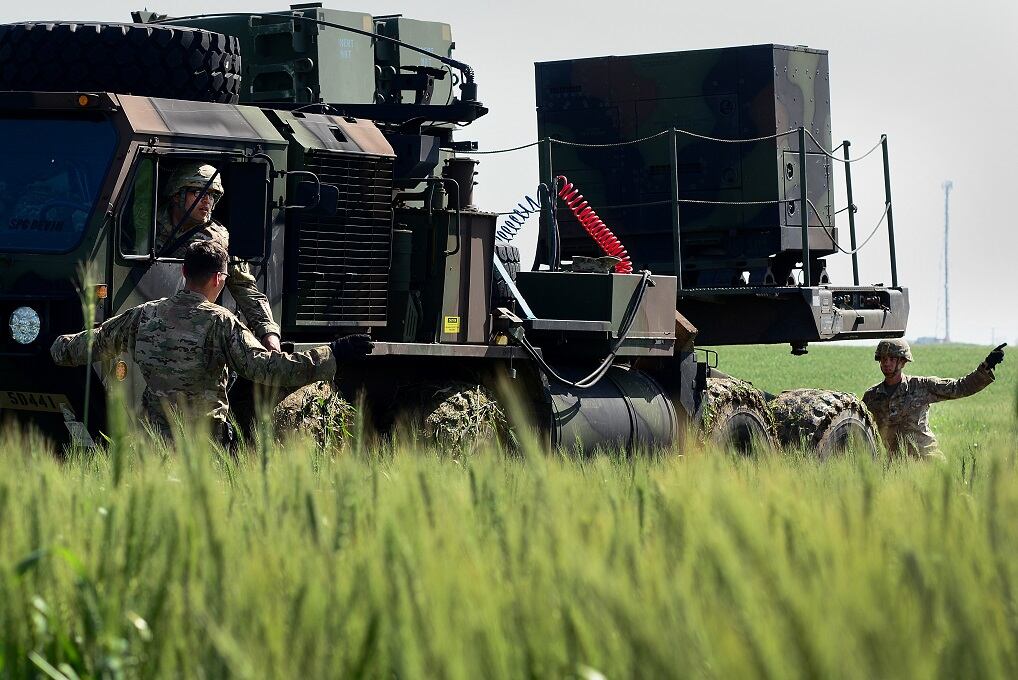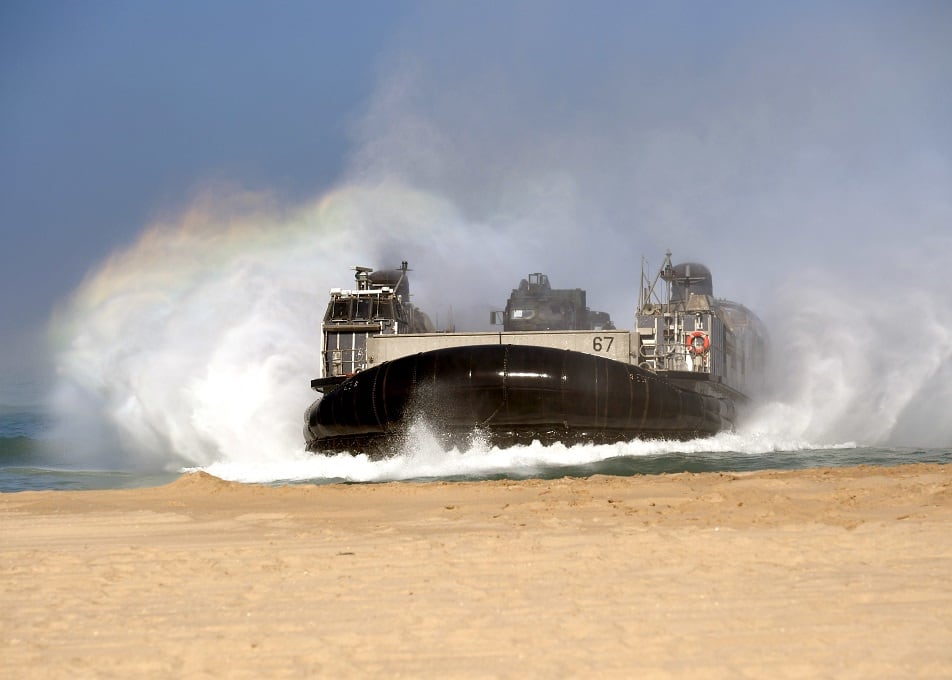HAZOR AIR BASE, Israel ― More than 2,500 U.S. troops have taken part in the Juniper Cobra joint exercise with Israeli Defense Forces, which concludes Thursday.
This year’s event served as a dress rehearsal for a joint response to anl Iranian missile attack on Israel.
Contingency plans could be activated at any moment, with U.S. forces arriving in Israel from Europe, officers from both countries explained.
“It depends on the scenario at some point, but we will have fighting forces moving within 72 hours,” Lt. Gen. Richard Clark, commander of 3rd Air Force, told reporters here. “We can phase in our forces as required, but almost immediately, we can start moving forces.”
The biennial air defense drill aims to hone the ability of both nations to operate as a joint task force against an attack.
Given the growing and evermore direct involvement of Iran’s Islamic Revolutionary Guard Corps beyond Israel’s border with Syria, this year’s Juniper Cobra ― the ninth held here since 2001 ― simulates a clash that is becoming less hypothetical.
“For us, we call it a dress rehearsal because we understand that this can happen, and [the joint task force] can be activated at any moment,” Lt. Col. Tal Kaduri, head of cooperation for the Israel Air Defense Force, told Defense News, a sister publication.

According to Kaduri, who has played an active role in planning multiple Juniper Cobra drills, scenarios driven by the Iranian threat are increasingly relevant.
“It’s not just Iran’s involvement in Syria, but everywhere,” he said. “We understand Iran has its arms spread around a lot of places in the Middle East, and we can safely say that’s our main threat.”
The main goal of Juniper Cobra 2018, Kaduri said, “is to see how both forces can answer the evolving threats that Iran is posing.”
To that end, the two allies have put in place Joint Task Force-Israel to plan and command thousands of interoperable land- and sea-based forces, all training in common doctrine, language and rules of engagement.
Training has included computer-assisted simulations ranging from rocket threats to crisis resupply, foreign disaster response and foreign humanitarian assistance, according to the Defense Department.
The goal is to give the U.S. military and IDF an opportunity to work together and learn from each other, according to U.S. Air Forces Europe.
More than 2,100 of the U.S. troops were deployed to various locations across Israel for this iteration. Most will depart after Juniper Cobra ends, but some U.S. personnel will remain in Israel for additional training opportunities.
Along with Air Force personnel, the U.S. sent the amphibious assault ship Iwo Jima with its embarked 26th Marine Expeditionary Unit. They didn’t participate directly in the ballistic missile defense portion of the exercise, but they participated in bilateral training with the IDF, according to the Navy.
The command ship Mount Whitney and guided-missile destroyer Carney also participated, the Navy said.
The Army’s 10th Army Air and Missile Defense Command took part, along with EUCOM components.

U.S. Air Force Col. Justin Hickman, chief of staff of JTF-Israel, said the two countries have honed tactics, techniques and procedures to a point of very rapid interoperability.
The JTF format “allows us to bring our soldiers, sailors, airmen and Marines together to train that way. It’s in our doctrine,” he said. “Especially given the immediacy of the threat in Israel … we welcome the opportunity to work together in a challenging training environment. …
“Those relationships you have to build up over time,” Hickman said. “You can’t just get here and expect to work together effectively. That’s why we have these exercises every two years, with routine conferences and meetings in between.”
Although the number of U.S. forces on the ground in this year’s Juniper Cobra was down slightly from previous years, Kaduri insisted that it didn’t indicate lower priority, but rather improved interoperability mastered by both sides.
“It’s not only the forces physically deployed here in Israel, but forces stationed in the [U.S. European Command] arena in Germany. We connect via communication lines and other methods of interoperability,” he said. “So the fact that you’re not seeing them on the ground here doesn’t mean they aren’t here. The mission is much, much bigger, with a larger network of participants, even though they’re not physically here.”
Hickman noted that it’s not only Israel that benefits from the joint training and contingency planning.
“We benefit from bringing the soldiers here for realistic training, improved mobility and the lessons we learn from working with our Israeli partners,” he said. “They have the Arrow, David’s Sling, Iron Dome. We have Patriot, THAAD and Aegis. It’s amazing technology, and we all gain from interoperability.”
Reporter Charlsy Panzino contributed to this article.
Opall-Rome is Israel bureau chief for Defense News. She has been covering U.S.-Israel strategic cooperation, Mideast security and missile defense since May 1988. She lives north of Tel Aviv. Visit her website at www.opall-rome.com.





